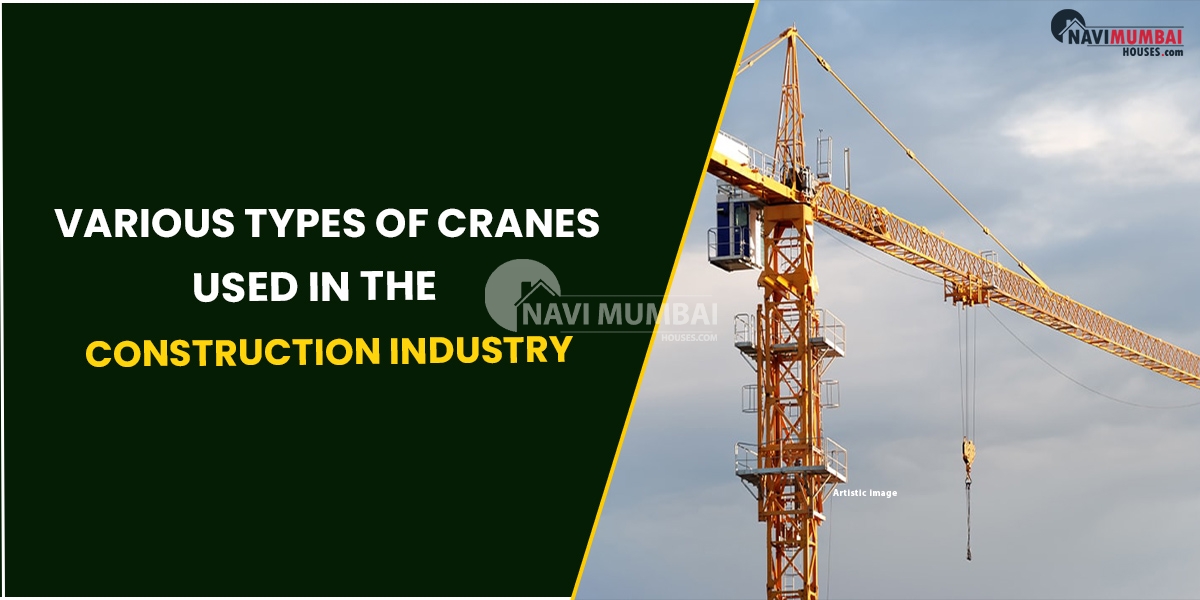
- November 7, 2022
- News
The Importance Of Concrete Mix Design In The Construction Sector
A building project has to understand concrete mix design in order to have the durability and strength required. It is feasible to make concrete with a strength that exceeds the bare minimum required for the job if one uses premium quality raw materials. From the perspective of the mechanical features, that would be fine, but the project’s overall cost might soar to an unacceptably high level that choosing that choice would be unthinkable. To prevent this, concrete mix design gives structures the necessary structural toughness and longevity without going over budget for the project.
Are you looking for flats in kurla?
In this post, we’ll look at the importance of concrete mix design, the factors that affect it, and the procedures to follow when choosing the right mix.
What is the definition of concrete mix design?
To attain the requisite durability and strength for a building project, concrete mix design is a thorough decision-making process that calls for understanding of the raw materials and their suitable proportions. The main ingredients of concrete are water, aggregate, cement, and a few admixtures (when necessary), and each of these ingredients has distinct characteristics that must be taken into account in order to develop a well-balanced and efficient mix design.
Objective of concrete mix design
The goal of mix design is to determine what proportions of each element will give concrete the appropriate properties. For the intended use, the mix proportions must be adjusted such that the new concrete has the right workability and can be easily poured and compressed. The concrete must be sufficiently malleable while still wet to completely fill the mould and encapsulate the reinforcement, and it must be sufficiently durable and strong once it has dried to meet design requirements.
Concrete mix design: types
There are several concrete compositions that can be utilised, depending on the level of durability desired. The quantity of cement and the presence and absence of an admixture are typically used to differentiate between types.
Standard Concrete
The most popular mix design of concrete used in building is “normal” or “regular” concrete because of its standardized, mass-production-friendly design. This concrete mixture must be made with exacting adherence to the manufacturer’s predetermined mixing design criteria at all times.
In terms of mechanical properties, normal concrete exhibits impressive resistance to compressive strain but is fully vulnerable to tensile assault. It has a maximum 40 MPa strength. However, in harsh conditions, such as below-freezing temperatures, it frequently fails.
Concrete with High Strength
It is advised to utilise high-strength concrete for constructions like buildings & sidewalks due to the substance’s superior ability to withstand stress. This type of concrete is frequently able to endure compressive pressures more than 40 MPa due to its low water-to-cement ratio. The w/c ratio for this kind of mix design is typically less than 0.35, which is a significant disadvantage given the potential for brittleness.
Concrete with Air Inclusions
Colder regions are the greatest places to use air-entrained concrete. Given that water is a key ingredient in concrete, its expansion at very low temperatures may result in tension that, if there are no gaps within the concrete matrix, may eventually lead to fractures. By including air-entraining substances or additives, the predicted internal expansion can occur without risk. However, air-entrained concrete has poor density and durability. As a result, only structures that won’t be subjected to significant weights should employ this type of concrete mix.
Concrete mix design: Elements that affect concrete mix design
Numerous elements, such as the following, affect the choice of combination proportions for concrete mixed designs:
Compression power
Once the concrete has hardened, it plays a significant role in determining the other measurable properties of the material. Based on the normal compressive strength required at a specific stage, which is typically 28 days, the conventional water-cement proportion of the mix is chosen. In addition to age and the temperature at which it was allowed to cure, another element that affects concrete’s strength is how tightly it has been compacted.
Workability
The three factors listed below affect how much workability is required. These factors include the size of the exposed concrete section, the size and weight of the reinforcing bars, and the compression technique to be used. Concrete with excellent workability is required for full compression in the narrow, challenging section with several corners or inaccessible areas. The implanted steel bars are the same way.
Durability
The ability of concrete to tolerate challenging conditions is what gives it resilience. Higher strength concrete could be expected to last longer. The water-to-cement ratio will be determined by the need for durability when strong concrete is not necessary but harsh exposure requires a lengthy lifespan for the concrete.
Nominal maximum aggregate size
Fixed a given water-cement ratio, the cement requirement reduces with aggregate size because concrete workability increases with aggregate size. As aggregate size reduces, compressive strength rises. According to IS 1343:1980 and IS 456:2000, the nominal aggregate size should be as large as is practical.
Type of aggregate
The aggregate type has a significant impact on the aggregate-cement ratio, which must be reached in order to obtain the desired workability and required water-cement ratio. A high-quality aggregate must have grading homogeneity, which can be achieved by mixing aggregates of different sizes.
How to choose the concrete mix design
Modern concrete mixes can be complicate to create. The concrete mixture that will be utilise will depend on the project’s strength and aesthetic demands, as well as any applicable laws or construction regulations. Concrete parameters must be established before the design process can begin. These criteria also take into account the anticipated design strength and the anticipated operational weather. Cylindrical samples of the concrete that have undergone the same curing conditions are taken in order to calculate its compressive strength.
Numerous factors need to be taken into account, from the cost of the various additives & aggregates to the trade-offs between performances and “slump” (ease of mixing and placement). The mix is then created using cement (Portland or another cementations material), fine & coarse aggregates, water, & filler material.
Concrete mix design considerations
When creating concrete mixtures, the following factors should be taken into consideration:
Designation of grade
The strength of the concrete is expressed in N/mm2 when it is tested in any curing medium after curing. The grade of concrete that should be used is determin by the application.
Selection of cement
Depending on the usage, different types of cement are available. Before being examined in the design mix, the cement needs to have its performance assessed to see whether or not it fits the standards set by its use.
Choosing the aggregate size
The amount of aggregates needed for each mix depends on the physical characteristics that the design demands. Each type of aggregate must first go through quality sizing before being use.
Variety of water
Any water that will be utilised in the creation of a concrete mix should undergo a series of tests before to usage to ascertain whether or not its water content is within the permitted range for concrete. Testing is still highly advised even though the vast majority of potable water can be used to make concrete.
Percentage of water to cement
Testing the water-to-cement ratio can reveal details like coherence, preliminary & final set, workability, cement solidity, concrete slump, & compressive factor, to name just a few.
Durability
This measurement is used to evaluate the necessary toughness of any particular concrete grade after a 28-day curing period. For durability, on-site control testing should be perform.
Concrete mix design for various concrete grades
| Types of Concrete | Concrete Grade | Mix Ratio (Cement: Sand: Aggregates) | Compressive Strength |
| Ordinary Concrete | M5 | 01:05:10 | 5 N/mm2 |
| M7.5 | 01:04:08 | 7.5 N/mm2 | |
| M10 | 01:03:06 | 10 N/mm2 | |
| M15 | 01:02:04 | 15 N/mm2 | |
| M20 | 1:1.5:3 | 20 N/mm2 | |
| Standard Concrete | M25 | 01:01:02 | 25 N/mm2 |
| M30 | Design Mix | 30 N/mm2 | |
| M35 | Design Mix | 35 N/mm2 | |
| M40 | Design Mix | 40 N/mm2 | |
| M45 | Design Mix | 45 N/mm2 | |
| M50 | Design Mix | 50 N/mm2 | |
| High Strength Concrete | M55 | Design Mix | 55 N/mm2 |
| M60 | Design Mix | 60 N/mm2 | |
| M65 | Design Mix | 65 N/mm2 | |
| M70 | Design Mix | 70 N/mm2 |
You’re looking for Buy Homes in Vasai we have the Best Properties In Mumbai Like Ready to Move: https://navimumbaihouses.com/property/search/buy/vasai/
If you want daily property update details please follow us on Facebook Page / YouTube Channel / Twitter











